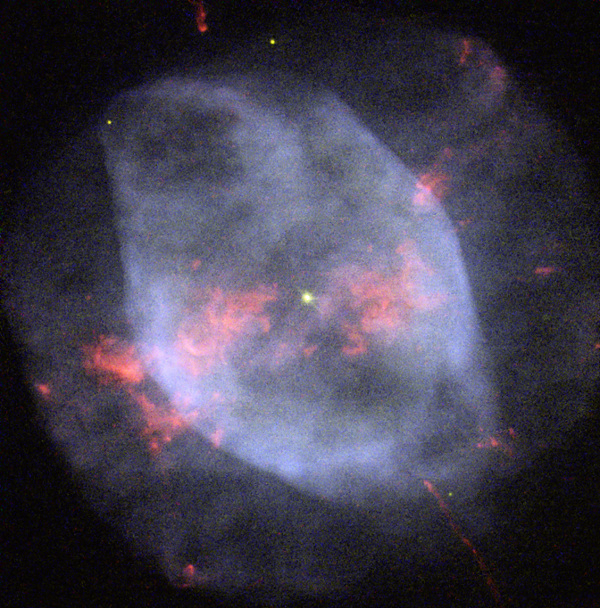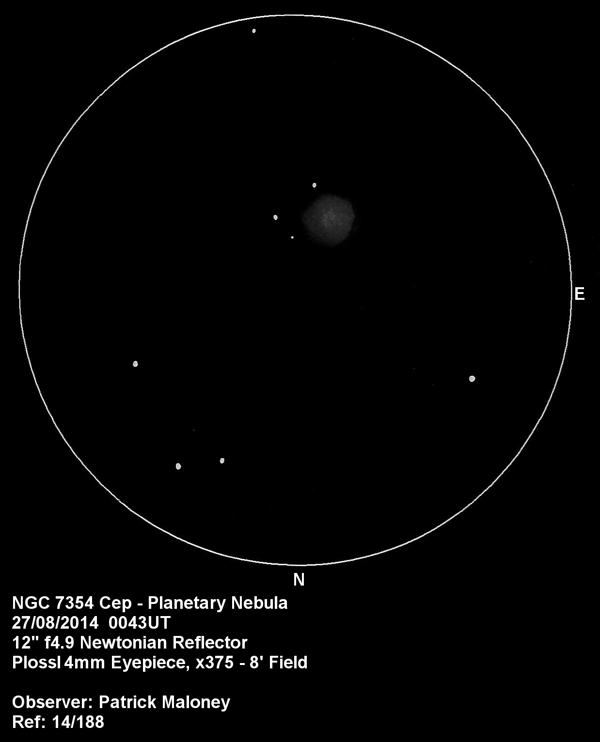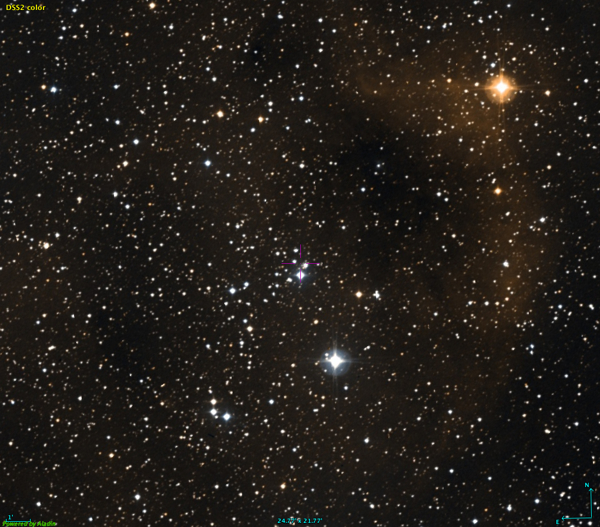Mayer 1 in Cassiopeia and NGC 7354 in Cepheus
September 2021 - Nebula and Cluster of the Month
This month, we’ll be looking at two objects that sit virtually overhead in Britain around midnight during September. Apologies to users of Dobsonian-mounted telescopes!
We’ll begin with this month’s nebula; NGC 7354 in Cepheus, a fairly bright and large object that should present few problems. It was discovered on 3rd November 1787 by William Herschel, who described it as pretty bright, small, irregularly round, easily resolvable, almost equally bright.
His comment that the nebula was ‘easily resolvable’ is troubling. At this stage in his career, Herschel still believed that ‘nebulae’ were all made up of stars and would eventually submit to telescopic resolution. This is an opinion he changed in 1790, specifically with regard to another planetary nebula, NGC 1514, which he came to believe could not be made of stars. At this point, however, he still believed he could resolve the planetary ‘easily’ into stars.

NGC 7354 lies at a distance of about 5,500 light-years and is described as a type IV+IIIb, which means it has an annular structure plus an irregular disc that also has traces of a ring. Its complex morphology could be explained by a binary central star. The central star is magnitude 16.1 and is very difficult.
Although bright, NGC 7354 didn’t make it into Herschel’s category I (bright nebulae). He placed it in category II (faint nebulae), as 705 H.II.
At magnitude 12.2, it is a bright, large object, easily seen. I observed it with a 12” reflector using an eyepiece that gave me a magnification of x375 and a field of view of 8’. I found it to be very bright and large. It appeared round and smooth-looking, perhaps reflecting Herschel’s comment that it is ‘almost equally bright’. The disc is brighter in the centre, and although I did record two stars below 15th magnitude, the 16.1 mag central star was not seen. The nebula responds well to a UHC filter and even better to an OIII.

I am constantly aware that the objects I showcase in these articles are almost always discoveries of William Herschel. Every now and then, I like to pick an object that wasn’t discovered by him, and so it is with this month’s open cluster. This month, I have chosen Mayer 1 (OCl 288.1), a small but attractive group in Cassiopeia.

Cassiopeia is extraordinarily well endowed with open clusters, and so it is perhaps unsurprising that Herschel didn’t bag them all. Mayer 1 is only a little group, characterised by Archinal & Hynes with a Trumpler classification of IV2p n, indicating that the cluster is not well detached from its background, that the member stars have a moderate range of brightnesses, that it is poor, having fewer than 50 members and that it is associated with some nebulosity. The nebulosity is a patch of bright nebula about 25’ across, stretching south-east from the variable star V743 Cas (type SRB, magnitude 6.8–6.9, period 500 days). The nebula is listed by three separate designations; LBN 592, LBN 593 and Sh2-173, which may refer to individual bright areas in the nebula, or to the nebula itself. Who can tell? On the face of it, the Trumpler classification indicates a very boring object, probably not even separable from its background in the eyepiece. However, if you take the time to visit this little cluster, you will find a very pleasing field. Although as mere visual observers we are limited in our ability to determine which stars are members of a cluster, it doesn’t really matter when we can simply appreciate the beauty of a star field. The brightest star in the field is SAO 11134, magnitude 7.3, this is most likely a foreground star. The cluster stars range from mag 9 to 13. The background nebulosity is exceptionally faint and unlikely to be detected visually.

In 2011, a study was made by Brazilian astronomers E. Bica and C. Bonatto of 15 poor star clusters that have been listed in various catalogues as both open clusters and asterisms (Astronomy & Astrophysics 520, A32, 2011). Mayer 1 was one of the objects studied and the authors concluded that from their studies that it is indeed a true open cluster.
Patrick Maloney (DeepSkyBagger@gmail.com)
| Object | RA | Dec | Type | Magnitude |
|---|---|---|---|---|
| NGC 7354 | 22h 40m 19s | +61° 17’ 08” | Planetary nebula | 12.2 |
| Mayer 1 | 00h 22m 05s | +61° 42’ 34” | Open cluster | - |